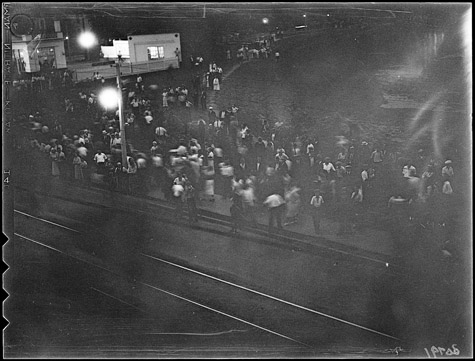By Denise Balkissoon
Today on Twitter, the Ottawa Citizen’s Dan Gardner asked why sports teams named after aboriginal tribes/artifacts are problematic when the Minnesota Vikings et al. are not. I’ve been thinking about this ever since the Atlanta Braves announced the return of its “Screaming Savage” logo in December, so here’s my answer.
The only team that I could think of that’s named after a symbol of privilege is the Ottawa Senators. So first off, why don’t we name teams after actual symbols of power, rather than just weird caricatures of power? The Toronto F.C. Derivatives! The Georgian Bay Docks! It’s worth thinking about why some groups are allowed to be caricatured (like the Senate, am I right?) and some are not.
Team names are meant to be mythologizing. As such, they are kind of dumb (who else is still mad our NBA team is named after a Spielberg movie? BAH). Rooting for the Toronto Maple Leafs doesn’t mean being kinder to urban trees or considering the effect of climate change on maple syrup. Yes, this is a tangent (but no, I shouldn’t lighten up): my point is that team names aren’t connected to their namesake in any meaningful way.
This disconnect allows a group that is now privileged to mythologize its history. The Vikings are the ultimate example, because the history of Swedes in Minnesota is now celebrated. In the United States, the Vikings are 100% history. So go for it, wear a foam spiked helmet and consider yourself badass.



